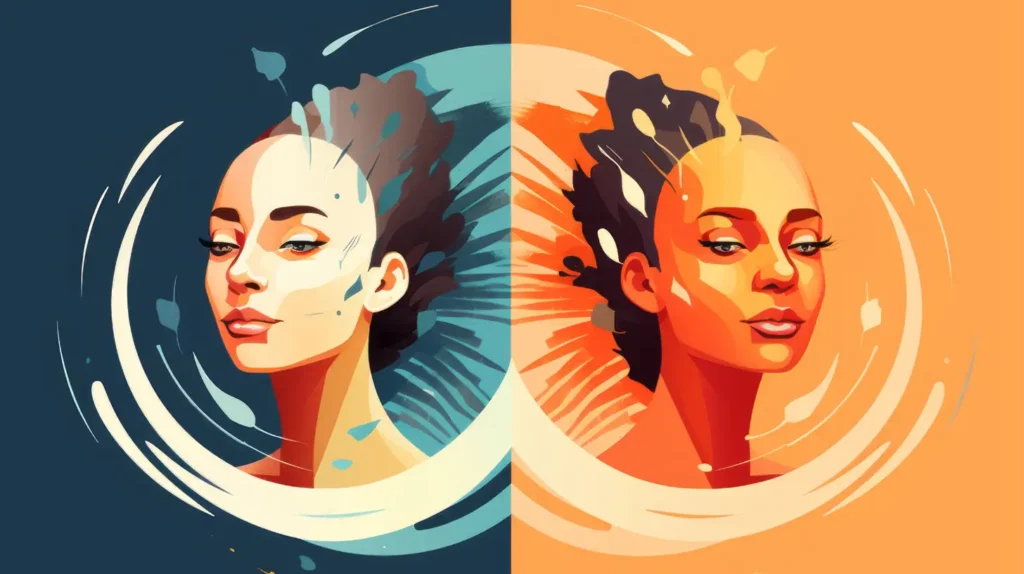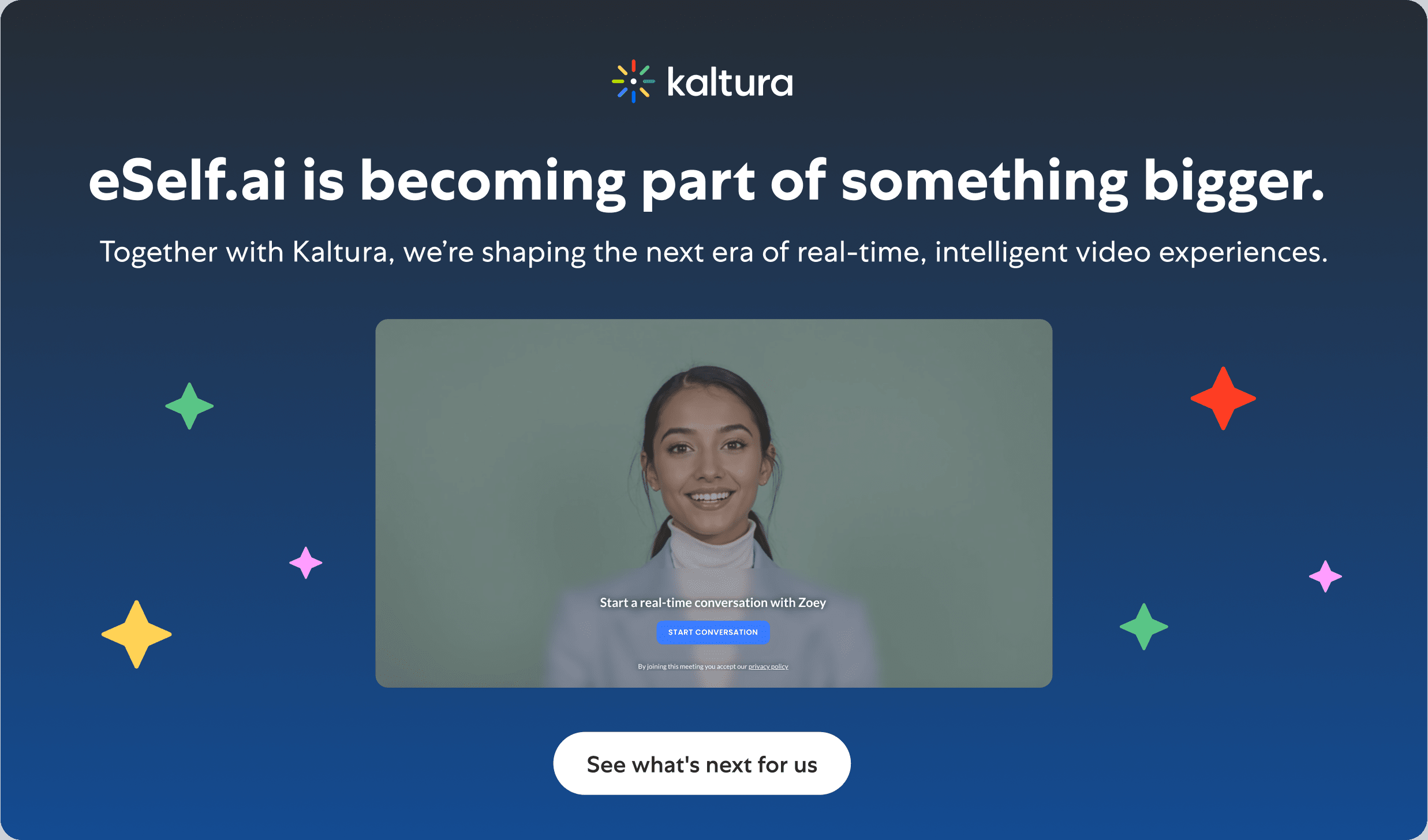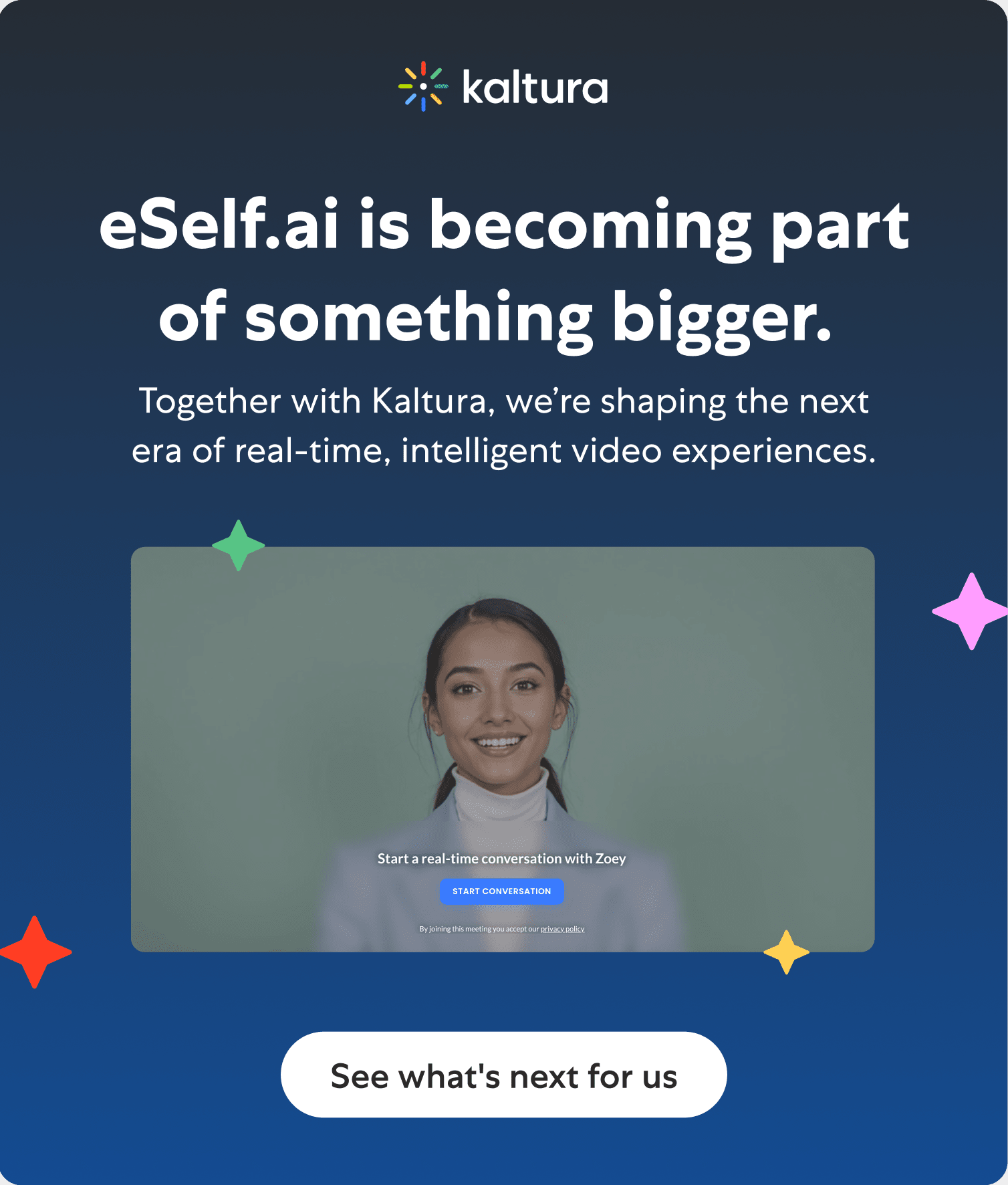The line between generative art and AI art is often blurred, but understanding the difference is key if you’re exploring creative technology. These terms are used interchangeably, yet they represent distinct approaches to digital creation: one rooted in structured algorithms, the other powered by machine learning.
Generative art is built on rules. Artists set up systems, like code, randomness, and constraints, that then generate visual outputs. AI art, on the other hand, leans on trained models that analyze vast amounts of data to create something new. Both methods push the boundaries of creativity, but they operate in fundamentally different ways.
Defining Generative Art and AI Art
What is Generative Art?
Generative art involves creating artworks through the use of autonomous systems, often involving algorithms or mathematical formulas. As an artist, you establish a set of rules or parameters, and the system follows these guidelines to produce the final piece. This method allows for a blend of control and unpredictability, resulting in unique and often complex visuals.
Historically, gen art has roots in movements like Dadaism and Surrealism, which embraced chance and unpredictability. In the 1960s, artists began leveraging computers to explore these concepts further, using code to generate intricate patterns and designs.
What is AI Art?
AI art, on the other hand, utilizes artificial intelligence, particularly machine learning algorithms, to create images. In this process, you train a neural network on a large dataset of existing images. Once trained, the AI can generate new visuals that often reflect the characteristics of the input data but combine elements in novel ways. This is the core of the AI art generation process.
What is Generative AI Art?
If you’re wondering what is generative AI art, this hybrid approach is where rules meet training data.
Generative AI art is a subset of AI art that uses models like GANs or diffusion systems to create original content based on learned styles and structures. It blends the generative process with deep learning, resulting in images that mimic, remix, or innovate upon visual trends and artistic traditions.
Understanding the Core Differences: Gen Art vs AI Art
Generative art and AI art may seem similar on the surface, but they are built on fundamentally different creative processes. Generative art relies on rule-based systems, while AI art is shaped by machine learning. Let’s break down the key distinctions.
| Aspect | Generative Art | AI Art |
| Process | Rule-based systems with human-defined parameters | Data-driven models trained on large datasets |
| Control | Artist retains control by setting algorithmic rules | AI has creative autonomy within model parameters |
| Output | Deterministic or randomized within defined constraints | Probabilistic, based on learned data patterns |
| Tools | Creative coding platforms (e.g., Processing, p5.js) | AI models like GANs, diffusion networks |
| Creative Role | Artist is the primary driver of creativity | AI contributes heavily to the creative process |
Techniques and Methodologies in Generative Art
Generative art is all about controlled randomness. Instead of manually designing each element, artists create a set of rules, often using code, algorithms, or mathematical formulas, that guide the system in generating the artwork. Think of it as setting up a framework and letting the program do the rest.
Some generative artists use simple instructions, like geometric transformations or color constraints, while others design complex procedural systems that evolve over time.
The defining feature? The artist still plays a direct role in shaping the output, even if they don’t manually place every pixel. For those learning how to create generative art, understanding this balance is essential.
AI Art: The Role of Machine Learning and Neural Networks
AI art, on the other hand, shifts more creative control to the machine. Instead of following pre-set rules, AI models are trained on large datasets of existing artworks. They analyze patterns, textures, and styles to generate new pieces, often without explicit guidance beyond the dataset and parameters they’re given.
Neural networks (particularly Generative Adversarial Networks (GANs) and diffusion models) are commonly used to produce AI-generated artwork. These models don’t just follow a formula; they learn from the data and create new images that blend, remix, or reinterpret elements from what they’ve seen.
Comparative Analysis: Intent and Creativity in Art
A key distinction between generative and AI art comes down to intent. In generative art, the artist actively designs the rules, deciding how much randomness to allow and guiding the creative process. In AI art, much of the “decision-making” happens within the trained model itself, often leading to unexpected or even unexplainable results.
Neither approach is inherently better; each serves a different purpose. Generative art is great for controlled exploration, while AI art pushes the boundaries of machine-led creativity. The best choice depends on what you’re looking to achieve.
How AI and Generative Art Are Created: Tools, Techniques, and Processes
How AI Art is Made: Machine Learning & Neural Networks Explained
AI art shifts more creative control to the machine. Instead of following pre-set rules, AI models are trained on large datasets of existing artworks. They analyze patterns, textures, and styles to generate new pieces, often without explicit guidance beyond the dataset and parameters they’re given.
Neural networks—particularly Generative Adversarial Networks (GANs) and diffusion models—are commonly used in the AI art generation process. These systems don’t just follow a formula; they learn from data and synthesize original outputs.
If you’ve ever wondered how AI art works, or more specifically, how AI creates art that mimics complex human styles, the answer lies in these models’ ability to recognize and reinterpret visual patterns.
This is also how AI makes art that feels innovative—by blending learned styles in unpredictable ways. In essence, how does AI art work? It works by learning from massive image datasets and generating new compositions that reflect—but do not replicate—what it’s been trained on.
How to Create AI Art: Beginner Tools and Steps
Creating AI art is now accessible to anyone with an internet connection. These tools allow users to generate original visuals by simply describing what they want in text prompts. No coding or design background is needed—just creativity and experimentation. This is how to make AI art using prompt-based platforms.
Simple Steps for Creating AI Art:
- Choose an AI art generator (e.g., Midjourney, DALL-E 3, or Adobe Firefly).
- Enter a text prompt describing what you want to see (e.g., “a futuristic city skyline at night”).
- Adjust any optional settings like style, resolution, or number of variations.
- Let the AI generate the artwork.
- Download or refine the result as needed.
Popular AI art generators today include:
- Midjourney – Highly detailed, stylized visuals from text prompts.
- DALL-E 3 – OpenAI’s sophisticated text-to-image generator.
- Stable Diffusion – Open-source, customizable model.
- Leonardo AI – Accessible and flexible.
- Adobe Firefly – Integrated into Creative Cloud tools.
These tools require no coding. You enter prompts, and the AI generates visuals based on trained models. You enter prompts, and the AI generates visuals based on trained models.
How to Create Generative Art: Code-Based and Tool-Based Approaches
Creating generative art typically involves writing code or using visual programming tools to build systems that output artwork. Artists establish rules and parameters—like geometry, color range, or behavior—and the computer generates variations based on those inputs.
This is essentially how to create generative art: setting up systems, not individual strokes. It’s rule-driven creativity.
Simple Steps for Creating Gen Art:
- Choose a tool like Processing, p5.js, or TouchDesigner.
- Define the algorithm or system (e.g., rules for shape, movement, color).
- Use code or visual interfaces to set those parameters.
- Run the system to generate variations.
- Refine or iterate until the desired aesthetic is achieved.
Generative art uses creative coding and procedural systems. Top tools include:
- Processing – Beginner-friendly programming for visuals.
- p5.js – JavaScript version of Processing for web art.
- TouchDesigner – Visual programming for installations.
- openFrameworks and Cinder – Advanced toolkits for interactive art.
Artists define rules, constraints, or algorithms, and the system generates outputs. For those interested in the AI art source code behind creative systems, many frameworks and models are now open source, inviting experimentation.
From Static to Interactive: How AI-Generated Art Powers Business Experiences at eSelf.ai
While the creative world debates AI’s role in fine art, platforms like eSelf.ai are applying similar technologies to solve real business problems. Instead of just generating visual art, with our platform you can get hyper-realistic AI avatars and interactive AI video agents — transforming how businesses engage with customers.
From Generative Art to Generative Business Tools:
- Prompt-to-Avatar Technology: Just like you create AI art from a text prompt, eSelf.ai lets you generate a humanlike video avatar that speaks your brand’s message in seconds.
- Multimodal Generation: Combine text, video, and speech synthesis to produce digital twins that are indistinguishable from real humans — ideal for training, onboarding, or support.
- Creative Control with Business Logic: You retain full control over tone, script, and persona, while our AI handles visual rendering, voice cloning, and interactivity.
The Artistic and Cultural Implications
The Influence of Generative Art on Contemporary Art Movements
Movements like algorithmic art, computational aesthetics, and parametric design all trace their roots to generative techniques. With blockchain and NFTs enabling artists to sell unique digital pieces, generative art has gained recognition not just as a process but as a collectable asset. These works often evolve in real time and embrace interactivity.
These works often evolve in real time and embrace interactivity—key elements of modern AI generative art practices.
Ethical Concerns Around Generative and AI Art
AI art raises serious concerns about consent, authorship, and copyright. Companies often scrape training data from artists without permission, justified under “fair use.” While artistic styles currently lack legal copyright protection, this leaves creators vulnerable to exploitation.
Copyright Law vs Artistic Reality
Artists like Zhang Jingna have spoken out about AI models mimicking their work without consent. In her case against Jeff Dieschburg, a court acknowledged the violation, but broader protections remain limited. Other artists, including Jeff Diesburg and Churandot, have reported similar issues.
Fair Use Abuse
AI companies often justify scraping millions of artworks for training datasets under the legal doctrine of “fair use.” However, artists argue this practice violates ownership rights, especially when their work is used without consent or compensation.
Since artistic style is not protected under copyright, AI systems can mimic and reproduce distinctive aesthetics at scale, leading to uncredited imitation.The lack of style protection enables widespread mimicry without attribution.
Crisis of Originality: The Fallout of Generative AI in Art
The widespread use of generative AI tools has created a cultural disruption in the art world. As platforms become saturated with AI-generated images, human-made art is harder to find, and traditional creatives face declining demand and visibility.
- Oversaturation: Platforms like Shutterstock are overwhelmed with AI-generated content, making it difficult for original works to stand out.
- Job Displacement: Freelancers, illustrators, and concept artists report fewer commissions and reduced income as clients opt for AI-generated alternatives.
- Style Theft: AI tools replicate unique artistic styles at scale, sometimes producing thousands of derivative works from a single artist’s signature look.
- Artist Backlash: Communities have responded with protests—such as ArtStation artists staging homepage takeovers—and opt-out tools like DeviantArt’s Protect.
- Emotional Toll: Many artists express burnout and demoralization due to the devaluation of their labor and creative identity. in digital marketplaces, displacement of working creatives, and a crisis of artistic identity.
- Oversaturation: Platforms like Shutterstock are flooded with AI imagery.
- Job Displacement: Concept artists and illustrators face reduced demand.
- Style Theft: AI tools mimic unique styles at scale.
- Artist Backlash: ArtStation protests; DeviantArt’s opt-out tool.
- Emotional Toll: Creators report burnout, demotivation, and loss of visibility.
The Economic and Market Impact of AI Art
Generative AI is not only redefining how art is created—it’s reshaping the art economy at its core. From mass-market fashion to stock imagery, the saturation of AI-generated content is devaluing traditional creative work, both emotionally and financially.
Key Market Shifts:
- Fast Fashion Copying: Brands like SHEIN have used generative models to mimic independent designs at scale.
- Stock & Marketplace Saturation: Shutterstock and Adobe Stock now label or regulate AI content to address oversupply.
- NFT Disruption: AI-generated NFT collections have flooded the space, making it harder to assess value and authenticity.
- Monetization Models: Licensing libraries and subscription platforms now include AI-generated content alongside human art.
- Human Art Devaluation: Artists face emotional and financial losses as authentic work competes with mass AI output.
Legal & Ethical Challenges:
- Copyright Conflicts: Lawsuits over unauthorized training data are reshaping legal frameworks.
- Attribution Tools: Artists increasingly use tools like Glaze to protect their work from scraping.
The future of the art market depends on how we reconcile innovation with protection—balancing AI-generated opportunity with safeguards for human originality and value.
New monetization models like AI-generated NFTs, licensing libraries, and subscription platforms are challenging traditional gallery systems. Meanwhile, rapid content creation has led to market oversaturation, driving down perceived value for original works.
Emerging legal pressure is also reshaping the art economy. Artists are filing lawsuits to challenge unauthorized data scraping, while startups develop tools to protect creative ownership. The industry is at a crossroads—caught between innovation and exploitation. New monetization models, NFT trends, and legal conflicts are redefining how art is created and sold.
AI Art’s Impact on the Art Market: Trends and Predictions
The art market has always been driven by originality, but AI-generated art is challenging traditional notions of authorship. When Edmond de Belamy, an AI-created portrait, sold at Christie’s for $432,500 in 2018, it marked a turning point – AI art was no longer a novelty but a legitimate asset.
Since then, AI-generated artworks have surged in popularity, with platforms like Sotheby’s and Christie’s hosting AI-focused auctions. The rise of text-to-image models such as Midjourney and DALL-E has also lowered the barrier to entry, allowing more creators to produce and sell AI-generated pieces.
Conclusion: Navigating the New Creative Frontier
As AI and generative systems reshape how art is made, the distinction between rule-driven and data-driven creativity becomes more than technical—it defines how we think about authorship, originality, and value in the digital age.
Whether you’re a coder building generative frameworks or an artist experimenting with machine learning models, understanding the difference helps you choose the right tools, protect your work, and innovate responsibly.
And as platforms like eSelf.ai demonstrate, the future isn’t just about creating visuals—it’s about bringing them to life through AI-powered interaction and communication. The next chapter in art isn’t just about style or technology—it’s about how we use it to connect, teach, and tell stories in entirely new ways.
FAQs About Differences Between Generative Art vs. AI Art
What is the difference between generative art and AI art?
Generative art uses rule-based systems set by artists; AI art uses machine learning to create images based on data analysis.
Is computer-generated art the same as AI art?
No. Computer-generated art includes any digital art; AI art specifically involves machine learning or neural networks.
Why is AI art so controversial?
Because it often uses copyrighted work without consent, displaces human artists, and challenges traditional ideas of authorship.
Where does generative AI learn from?
It learns from datasets scraped from the internet, often including copyrighted images, artwork, and other media.
Can generative art be copyrighted?
Yes, if the artist defines the rules and controls the output. Copyright for AI-generated works is still legally unclear.
Is there any legal protection for style in AI art?
No. Currently, artistic style is not protected under copyright, making it vulnerable to imitation by AI.
How do artists protect their work from AI scraping?
Tools like Glaze can help, along with platforms that offer opt-out settings. Some artists also watermark or limit online exposure.
Is AI art boring?
Some critics argue it lacks soul or originality, but others see it as a new creative frontier.
Why are artists fed up with AI art?
Due to style theft, job loss, market oversaturation, and the erosion of creative credit in favor of algorithmic replication.
What are AI art generation methods?
AI art generation methods are techniques like GANs, diffusion models, and text-to-image algorithms that allow machines to create visual content. These systems are trained on image datasets and generate new art by learning patterns and styles, often guided by text prompts.
How does AI make art?
AI makes art by using machine learning models trained on large datasets of images. These models—such as GANs or diffusion networks—analyze patterns, colors, and styles, then generate new visuals based on what they’ve learned. In short, how AI creates art involves learning from existing works to produce original content through code-driven creativity.


